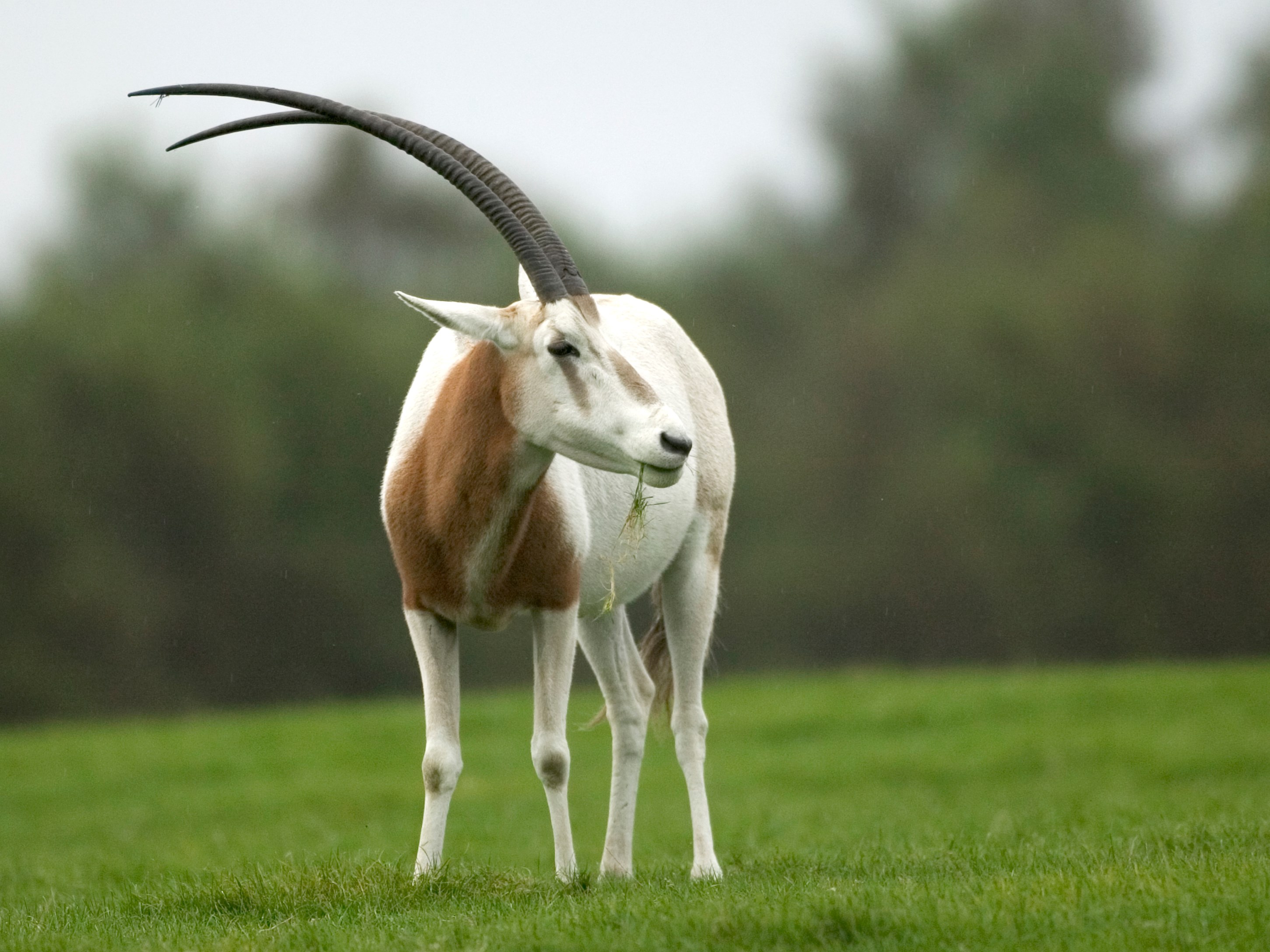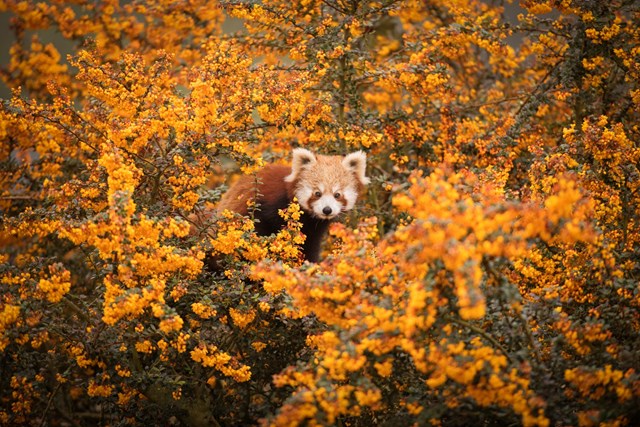
Overview
At Woburn Safari Park the herd of Scimitar horned oryx which can be seen in the Giraffe Junction section of the Road Safari. They are able to roam in their seven acre exhibit which they share with the large herd of Rothschild's giraffe and grevy’s zebra.
In the summer months, the herd of oryx will stay out in the section with access to shelter within the Antelope House. During the colder months, these animals will stay indoors overnight. The Antelope House is a facility that enables the management of numerous endangered and critically endangered species of ungulates.

All about us
| Distribution: | North Africa but now extinct. Captive herds are kept in Tunisia, Senegal and Morocco. |
|---|---|
| Habitat: | Sub-desert areas and wooded depressions between dunes and grassy steppe. |
| Height: | 3.6-4.1 ft at the shoulder |
| Weight: | 180 to 200 kg |
| Lifespan: | 20 Years |
| Threats: | Hunted for their horns, hides and their meat is also prized. |
About us
Scientific name: Oryx dammah
The scimitar horned oryx is an antelope species with long sickle shaped horns. Found in herds that usually consist of up to 70 individuals. There is generally a high ranking female is in front of the group whilst a dominant male directs the herd’s movements from the back.

Scimitar horned oryx have a white coat with a chestnut brown neck and chest and some individuals have chestnut brown flanks and thighs also. They have chestnut brown vertical stripes on their faces and a long tufted tail. Their white coat helps to keep the oryx cool by reflecting the heat of the desert sun and they have black skin to prevent sunburn.
Oryx calves are born with a beige colour coat and there markings will develop as they age.
The species most distinguishing feature is there long sickle shaped horns which are found on males and females. They curve backwards and on average reach a length of 40 inches. The female’s horns are usually more slender then those of the male and the length and thinness of the horns make them particularly fragile and they are prone to breaking.
They are very well adapted to their harsh environment, they have large spread hooves which allow them to walk on the sand of their dry habitat. They are able to survive without water for nine to ten months due to specialized kidneys that prevent excess loss of water through urine and minimizing perspiration by raising their body temperature to a maximum of 116 degrees Fahrenheit as well as obtaining some moisture from their diet. Up to this temperature there is a normal flow of heat from the body to the environment without a loss of water, only after this point does it start to perspire.
Another anatomical adaptation that allows the oryx to tolerate high temperatures that would be lethal to most other mammals is a network of fine blood vessels that carry blood from the heart to the brain. These blood vessels travel close to the nasal passage allowing them to cool by five degrees Fahrenheit before it is pumped to the brain which is one of the most heat sensitive organs of the body.
Scimitar-horned oryx are herbivores and the bulk of their diet consists of feeding on annual grasses. They will also feed on herbs, roots, buds and fruits and vegetables when available. They will migrate during the wet season in search of green grass.
Scimitar horned oryx are found in herds that usually consist of up to 70 individuals. Generally, a high ranking female is in front of the group whilst a dominant male directs the herd’s movements from the back.
Males have been observed to adopt group living as well as territoriality and this is influenced by environmental conditions and the distribution of females.
Herds have a strong social structure and a well-defined social hierarchy, they are extremely gregarious and individuals are very reluctant to live solitary. During the wet season, herds migrate north into the Sahara returning south as the dry season approaches and it is during this time that numerous herds will join together to form a large aggregation.
Typical breeding behaviour is done through the means of a mating circle. This is where a male and a female will stand parallel to one another whilst facing opposite directions. They will circle around one another until the female allows the male to mount her.
Scimitar horned oryx have a gestation period of between 8 to 8.5 months after which they will give birth to a single calf. The female will leave the herd to give birth but will return with her calf after just a few hours. These births usually peak between March and October and the offspring are weaned off their mothers between the age of three to four months.
Mankind has been the greatest threat to Scimitar-horned oryx populations. These animals have been hunted for their horns and hides by natives and their meat is also prized. During war events in North Africa, Scimitar-horned oryx were hunted to the point of extinction to feed human populations. They also had to compete with domestic herds for food and water. Their natural predators include lions, leopards, cheetah, jackal, vultures, and Cape hunting dogs. Climate change has also had an impact on the species populations as the Sahara region gets drier and drier. As part of planned reintroduction projects Scimitar-horned oryx have been released into fenced protected areas in Tunisia, Morocco, and Senegal.
There is a global captive breeding programme for this species with long-term planned reintroduction programmes for captive animals. They have been extinct in the wild since 2007 and they are managed as part of an EEP so that captive breeding populations can be managed ensuring the genetic diversity of the species is protected.
To find out more information on Scimitar-horned oryx conservation click on the links below.
Conservation Centre for Species Survival

